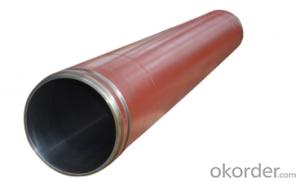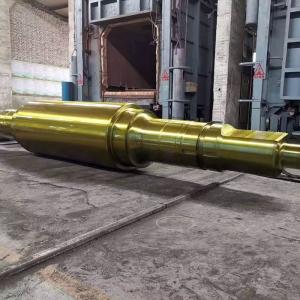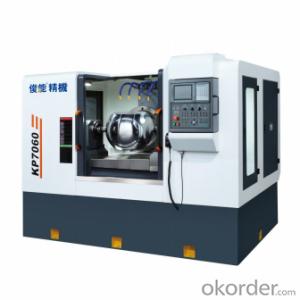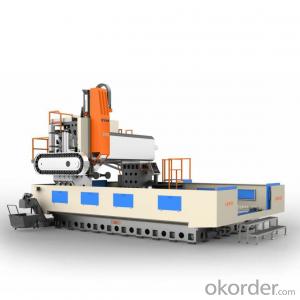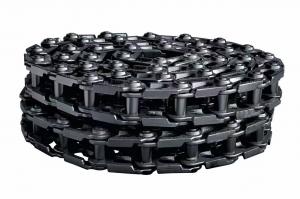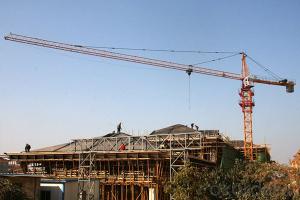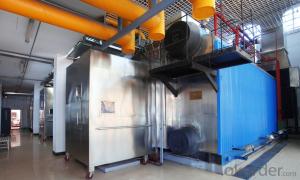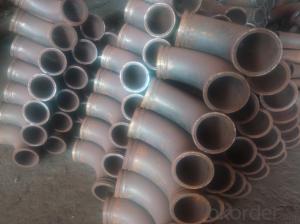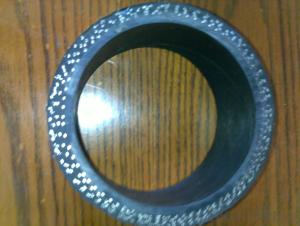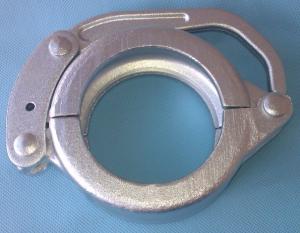DELIVERY CYLINDER(ZOOMLION ) I.D.:DN200 CR. THICKNESS :0.25MM-0.3MM COLOR:WHITE LENGTH:1862MM
- Loading Port:
- Shanghai
- Payment Terms:
- TT OR LC
- Min Order Qty:
- 2 pc
- Supply Capability:
- 1000 pc/month
OKorder Service Pledge
Quality Product, Order Online Tracking, Timely Delivery
OKorder Financial Service
Credit Rating, Credit Services, Credit Purchasing
You Might Also Like
Packaging & Delivery
| Packaging Detail: | wooden case, seaworthy packing |
| Delivery Detail: | 15 days |
Specifications
Concrete Pump Delivery Cylinder DN200*1862
1. Capacity: 60,000~80,000cbm
2. Size: DN180, DN200, DN230..
4. Brand: PM, Sany,ZM
Concrete Pump Delivery Cylinder DN200*1862
1. Material: C45
2. quenching and tempering to improve the hardness to HB241-280
3. inner wall chrome thickness is 0.25-0.30mm, hardness HV820-900.
4. Brand: SCHWING, PM, SANY, KYOKUTO, CIFA
5. Capacity: 60,000~80,000cbm
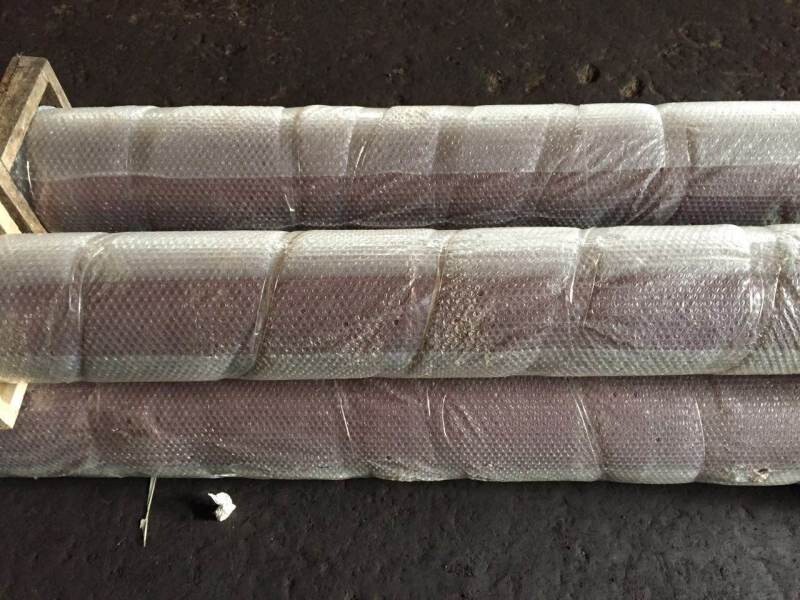


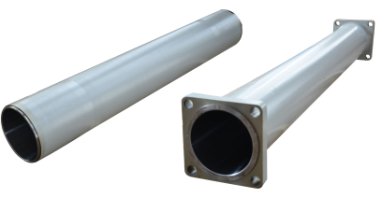
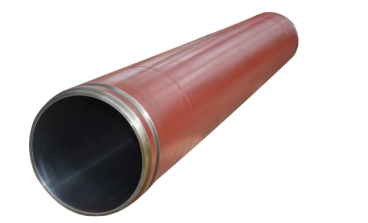
- Q:Are there any specific guidelines for the installation of hydraulic filters or strainers in concrete pump spare parts?
- Yes, there are specific guidelines for the installation of hydraulic filters or strainers in concrete pump spare parts. 1. Size and Compatibility: Ensure that the hydraulic filter or strainer you are installing is the correct size and compatible with the specific make and model of the concrete pump. Using the wrong size or incompatible filter can result in poor filtration or damage to the hydraulic system. 2. Location: The filter or strainer should be installed in a location that allows for easy access and maintenance. It should be positioned in a way that allows for proper filtration of the hydraulic fluid without obstructing the flow. 3. Mounting: The filter or strainer should be securely mounted to prevent any movement or vibration during operation. It is important to follow the manufacturer's instructions for proper mounting techniques and torque specifications. 4. Orientation: Pay attention to the recommended orientation of the filter or strainer. Some filters have specific flow direction requirements, and installing them incorrectly can affect their performance and efficiency. 5. Protection: Consider installing additional protection, such as a guard or shield, to prevent damage to the filter or strainer from external factors like debris or impacts. This can help prolong the lifespan and effectiveness of the filter. 6. Maintenance: Regularly inspect and clean the filter or strainer to ensure proper functioning. Follow the manufacturer's recommended maintenance schedule and procedures for replacement or cleaning to maintain optimal filtration efficiency. It is important to consult the manufacturer's instructions and guidelines for the specific hydraulic filter or strainer being installed, as they may have specific recommendations or requirements unique to their product.
- Q:How often should concrete pump pistons be inspected and replaced?
- Concrete pump pistons should be inspected and replaced regularly to ensure their optimal performance and prevent any potential malfunctions. The frequency of inspections and replacements will depend on various factors such as the type of concrete being pumped, the volume of concrete being pumped, and the operating conditions of the pump. As a general guideline, concrete pump pistons should be inspected and replaced every 500 to 1,000 hours of operation. However, this can vary depending on the specific pump manufacturer's recommendations, the quality of the concrete being pumped, and the maintenance and cleaning practices followed. Regular inspections should be conducted to check for any signs of wear, damage, or deterioration in the pistons. This includes examining the rubber seals, valve plates, and any other components that may affect the piston's performance. Any signs of cracks, tears, or excessive wear should prompt immediate replacement to prevent potential issues such as concrete leakage or loss of pressure. In addition to regular inspections, it is crucial to follow a preventive maintenance schedule that includes routine cleaning and lubrication of the pistons. This will help prolong their lifespan and ensure smooth operation. It is important to note that the specific recommendations for inspection and replacement intervals may vary between different pump manufacturers. Therefore, it is advisable to refer to the pump's operation and maintenance manual or consult with the manufacturer or a qualified technician to determine the ideal frequency for inspecting and replacing concrete pump pistons.
- Q:How can the concrete pump be installed and used?
- Concrete pump should be placed on a firm and flat ground, with legs down and the body stable
- Q:What are the different types of concrete pump hopper screens?
- The different types of concrete pump hopper screens include wire mesh screens, perforated plate screens, and synthetic fiber screens.
- Q:How often should concrete pump control panels be inspected and replaced?
- Concrete pump control panels should be inspected regularly, ideally on a monthly basis, to ensure they are functioning properly and to identify any potential issues. However, the frequency of replacement will depend on the specific condition of the control panel, as well as the manufacturer's recommendations. If any signs of wear or malfunction are detected during the inspection, it may be necessary to replace the control panel sooner.
- Q:How to operate the concrete pump?
- All the bolts of the pumping unit shall be fastened, and the pipe joints shall be tightly sealed. The protective devices shall be complete and reliable
- Q:What are the consequences of using substandard concrete pump spare parts?
- There are several consequences to using substandard concrete pump spare parts. Firstly, these parts may not fit properly or be of the same quality as the original ones, which can lead to a decrease in the overall performance and efficiency of the pump. This can result in the pump being unable to deliver the necessary amount of concrete or experiencing frequent breakdowns, causing project delays and higher costs. Secondly, substandard parts may have a shorter lifespan compared to genuine parts. This means that they may wear out or break down sooner, requiring more frequent replacements. This not only increases maintenance costs but also raises the risk of unexpected equipment failures during operation, which can be hazardous for workers and potentially cause accidents. Moreover, the use of substandard parts can compromise the safety of the concrete pump. Genuine parts are designed and manufactured to meet strict quality standards and ensure proper equipment functioning. In contrast, substandard parts may not undergo the same rigorous testing and quality control measures, making them less reliable and more prone to failure. This poses a serious risk to operators and other personnel working near the concrete pump. Additionally, the use of substandard parts can void any warranties or guarantees provided by the manufacturer. Manufacturers typically offer warranties on their products to ensure customer satisfaction and provide support in case of any issues. However, if substandard parts are used, the manufacturer may refuse to honor the warranty, leaving the owner responsible for any necessary repairs or replacements. To summarize, the use of substandard concrete pump spare parts can lead to reduced performance, increased maintenance costs, greater accident risks, and voided warranties. It is crucial to always use genuine parts specifically designed for the concrete pump to ensure optimal performance, longevity, and safety.
- Q:What is the difference between concrete pump and ground pump?
- The pump is actually the day Linuo arm frame of concrete pump boom is known, a few day, after mixing through the boom pump, the efficiency is very high
- Q:How can a faulty concrete pump control valve affect the pumping operation?
- A faulty concrete pump control valve can adversely affect the pumping operation in several ways. Firstly, it may lead to an inconsistent flow of concrete, causing disruptions in the pouring process. This can result in uneven distribution of concrete, affecting the quality and structural integrity of the project. Secondly, a faulty control valve may cause excessive pressure build-up within the pump, leading to potential damages or leaks. Additionally, it can impact the overall efficiency and productivity of the pumping operation, resulting in delays and increased costs. Therefore, it is crucial to ensure that the concrete pump control valve is in proper working condition to maintain a smooth and efficient pumping process.
- Q:What is the purpose of a concrete pump piston?
- The purpose of a concrete pump piston is to provide the necessary pressure to push the concrete mixture from the hopper into the delivery pipeline. The piston is responsible for generating the force required to propel the concrete through the system, effectively transporting it to its intended destination. This is achieved by the reciprocating motion of the piston, which creates suction on one side and pressure on the other, enabling the concrete to be pushed forward. Overall, the concrete pump piston plays a crucial role in facilitating the efficient and continuous movement of concrete, making it an essential component in construction projects that require the precise and timely placement of concrete.
1. Manufacturer Overview |
|
|---|---|
| Location | |
| Year Established | |
| Annual Output Value | |
| Main Markets | |
| Company Certifications | |
2. Manufacturer Certificates |
|
|---|---|
| a) Certification Name | |
| Range | |
| Reference | |
| Validity Period | |
3. Manufacturer Capability |
|
|---|---|
| a)Trade Capacity | |
| Nearest Port | |
| Export Percentage | |
| No.of Employees in Trade Department | |
| Language Spoken: | |
| b)Factory Information | |
| Factory Size: | |
| No. of Production Lines | |
| Contract Manufacturing | |
| Product Price Range | |
Send your message to us
DELIVERY CYLINDER(ZOOMLION ) I.D.:DN200 CR. THICKNESS :0.25MM-0.3MM COLOR:WHITE LENGTH:1862MM
- Loading Port:
- Shanghai
- Payment Terms:
- TT OR LC
- Min Order Qty:
- 2 pc
- Supply Capability:
- 1000 pc/month
OKorder Service Pledge
Quality Product, Order Online Tracking, Timely Delivery
OKorder Financial Service
Credit Rating, Credit Services, Credit Purchasing
Similar products
New products
Hot products
Related keywords
